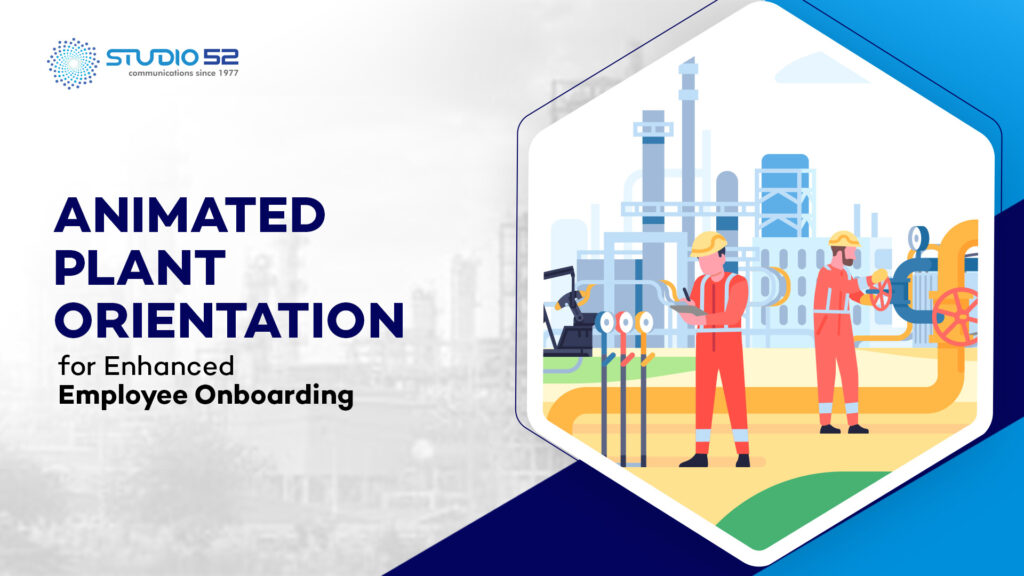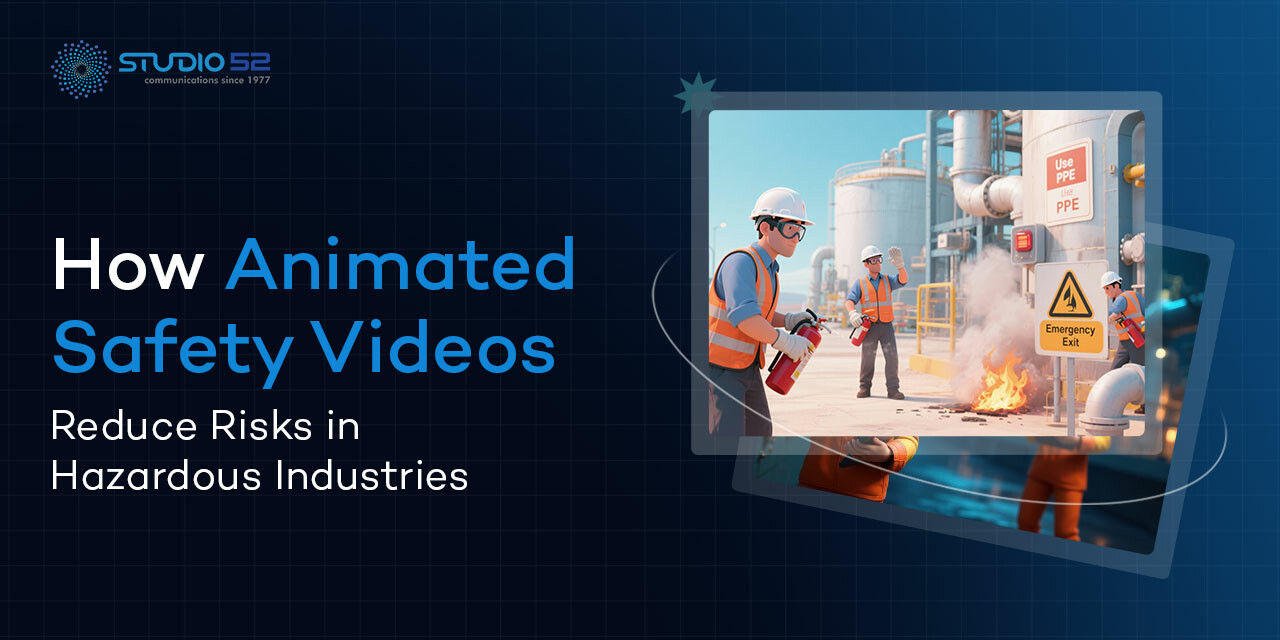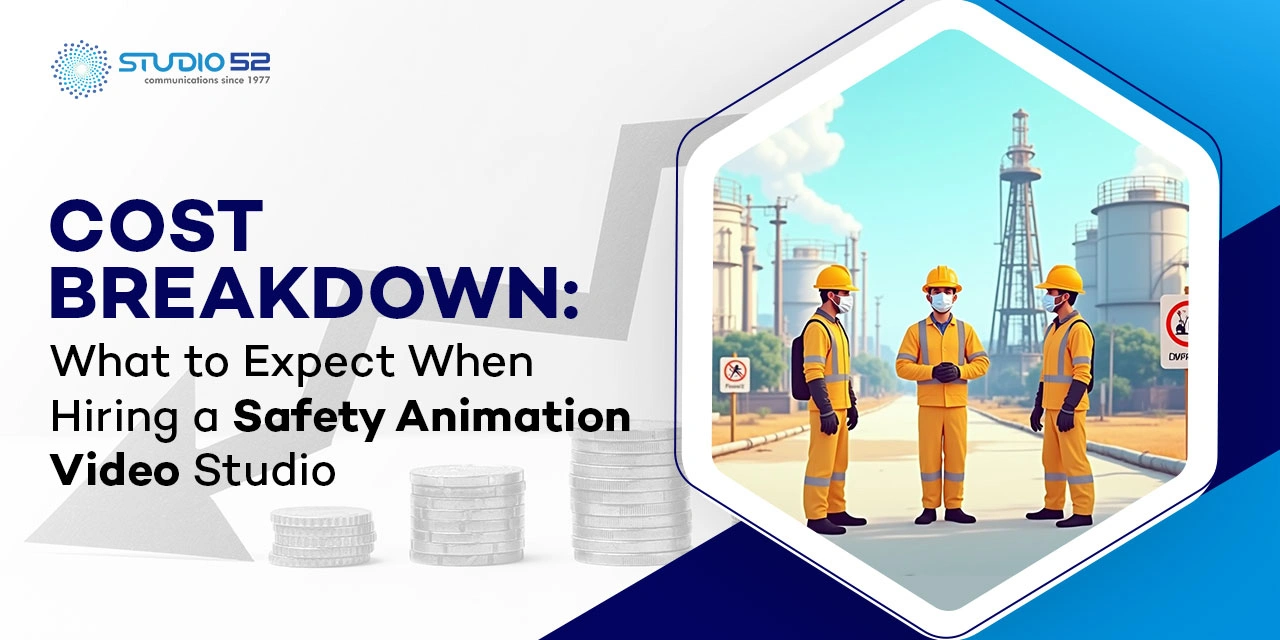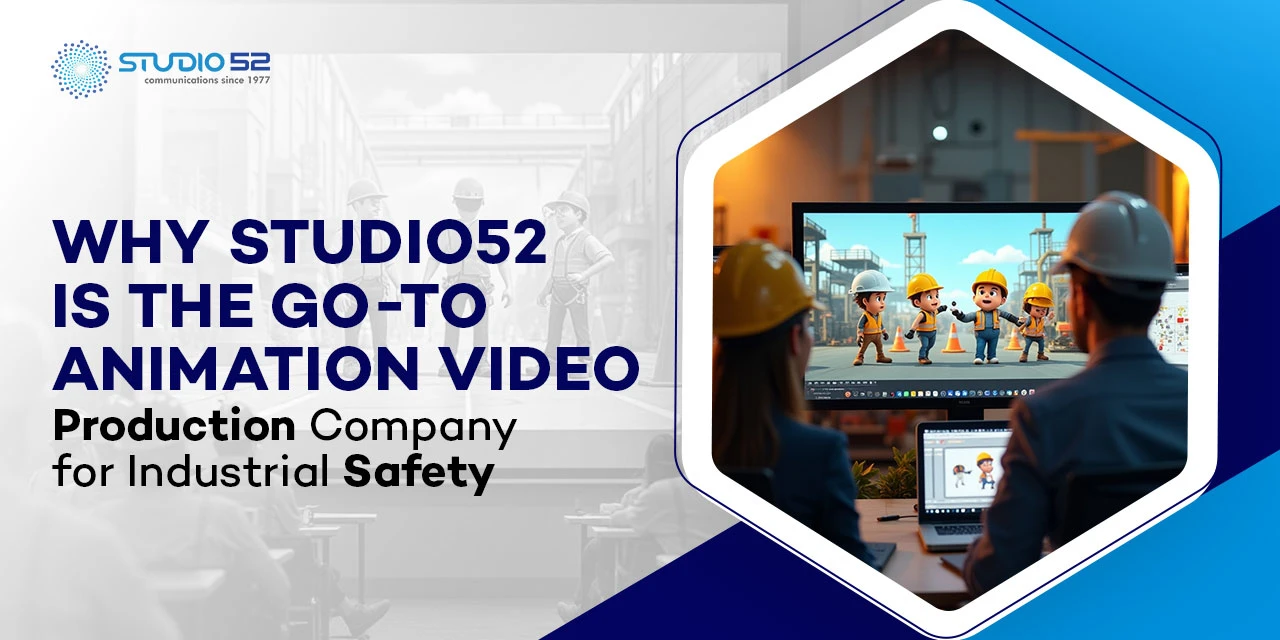Did you know that ineffective onboarding can lead to up to 20% of new hires leaving within the first 45 days of employment? The onboarding process plays a crucial role in shaping employee satisfaction, safety, and retention. For industries involving complex operations and large facilities, the traditional orientation methods often fall short when providing comprehensive onboarding knowledge.
This is where animated explainer videos come into play. They’re transforming how organisations introduce their facilities and operations to new employees. By combining engaging visual storytelling with practical knowledge, these videos make onboarding efficient, interactive, and impactful.
At Studio52, we specialise in animated explainer video creation and we have numerous projects to back it up. In this blog, we have explained why animated plant orientation is truly a game changer and why you should think about implementing explainer videos for your employee onboarding sessions.
Table of Content
What Is Animated Plant Orientation?
Animated plant orientation is a visual representation of a facility, designed to help new employees familiarise themselves with layouts, workflows, and safety protocols. These onboarding videos go beyond static maps or lengthy presentations by offering a virtual walkthrough experience that simulates real-time movement within the plant.
By using 3D modeling and engaging animations, organisations can provide a clear, detailed view of their facility’s key areas, such as workstations, restricted zones, emergency exits, and storage areas. This dynamic approach ensures that employees understand their work environment before setting foot on the premises, fostering confidence and readiness.
Why Choose Animated Plant Orientation?
1. Engaging and Interactive
Traditional orientation methods, such as static slideshows or printed manuals, often fail to captivate new employees. In contrast, animated plant orientation videos use visually appealing designs and dynamic storytelling to keep employees engaged.
By simulating real-time navigation through the plant, these animations provide a practical understanding of workflows and operational areas, making the onboarding experience immersive and memorable.
2. Cost-Effective and Scalable
While producing an animated video may require an initial investment, the long-term benefits make it a cost-effective solution. The video can be reused for years, eliminating the need for repetitive physical tours.
As these animations can easily be updated, they allow businesses to incorporate changes in layouts, workflows, or safety protocols without having to start from scratch. This scalability ensures that the onboarding process remains relevant and efficient.
3. Time-Saving
Physical plant tours can be time-consuming, requiring supervisors to repeatedly guide new hires through the facility. Animated videos streamline this process by delivering all essential information in a fraction of the time.
Moreover, employees can revisit the animation anytime to clarify doubts or reinforce their understanding, reducing dependency on supervisors and saving valuable time.
4. Enhanced Safety Awareness
Animated plant onboarding videos play a critical role in enhancing workplace safety. By visually highlighting restricted zones, emergency equipment, and evacuation routes, these videos ensure that employees are well-prepared to navigate the facility safely.
The combination of animated visuals and safety instructions improves retention, making employees more likely to remember and follow critical safety protocols.
Interested to learn more about why animated videos are the new industry trend? Check this post on 13 benefits of explainer videos!
Important Tips for Creating Animated Plant Orientation Videos
Creating animated plant orientation videos requires careful planning and thoughtful execution to ensure quality of information and engagement of the viewers. Here are some key best practices to keep in mind when developing these videos:
1. Define Clear Objectives
Before beginning production, clearly outline the goals of your video. Define what specific information new employees need to learn, such as:
- The overall facility layout, including key areas like workstations, storage, and restricted zones.
- Detailed safety protocols, such as emergency evacuation routes and proper use of safety equipment.
- Key workflows and processes critical to the organisation’s operations.
By having well-defined objectives, you can ensure that the video remains focused and delivers the most relevant content to your audience.
2. Customisable Content
Every facility has unique requirements, so it’s important to tailor the video to reflect these specifics. Consider creating content that aligns with:
- Departments: Highlight information specific to different teams, such as production, maintenance, or administration.
- Roles: Customise sections for various job functions, ensuring the video addresses the unique needs and responsibilities of each role.
- Processes: Showcase workflows or procedures unique to your organisation, giving employees a clear understanding of their tasks.
Customisable content ensures the video remains relevant and valuable for all employees, regardless of their role or department.
3. Highlight Key Areas
To make the orientation comprehensive, identify and emphasise critical zones within the facility. These areas may include:
- Control Rooms: Explain their importance and demonstrate proper access procedures.
- Emergency Exits: Clearly mark all exits and evacuation routes to ensure employees are prepared for emergencies.
- Hazardous Areas: Highlight restricted zones, machinery, or substances that require special precautions.
- Break Areas: Introduce spaces where employees can relax, reinforcing a welcoming workplace culture.
By visually showcasing these key areas, you help employees navigate the facility with confidence and clarity.
4. Engage Through Storytelling
Transform non-emotive instructional content into a captivating experience by integrating storytelling techniques. Use characters or a narrative to guide employees through the facility, making the information more relatable and easier to follow. For example:
- Create a scenario where a new employee is being guided by a virtual mentor or animated character.
- Introduce challenges or questions throughout the video to maintain engagement and reinforce learning.
Storytelling not only improves retention but also makes the onboarding process more enjoyable and less intimidating for new hires.
5. Integrate Multilingual Support
Modern workplaces are often diverse, with employees from various linguistic and cultural backgrounds. To ensure accessibility, provide:
- Subtitles or Translations: Include subtitles in multiple languages for non-native speakers.
- Voice Overs: Record voice overs in different languages to make the video more inclusive.
- Cultural Sensitivity: Tailor visuals and examples to resonate with your global workforce while respecting cultural nuances.
Multilingual support ensures that all employees can fully understand and benefit from the content, regardless of their language proficiency.
6. Include Interactivity
Interactive features can significantly enhance engagement and understanding. Consider incorporating the following elements:
- Clickable Hotspots: Allow employees to click on specific areas in the animation (e.g., a machine or safety zone) for detailed information or instructions.
- Quizzes: Include short quizzes or questions at the end of sections to test employees’ understanding of key concepts.
- Scenario-Based Learning: Simulate real-life scenarios and let employees make choices to practice decision-making in a safe, controlled environment.
Interactivity not only keeps employees engaged but also helps them retain information by actively participating in the learning process.
How Animated Plant Orientation Differs from Safety Induction Videos
While both animated plant orientation and safety induction videos contribute to onboarding, they serve distinct purposes:
- Safety Induction Videos focus on general workplace safety and compliance, covering topics like accident prevention, PPE (Personal Protective Equipment), and emergency response.
- Plant Orientation Videos emphasise facility-specific knowledge, including layout, workflows, and zone-specific safety protocols.
Together, these videos create a comprehensive onboarding experience. For more details on the importance of safety induction videos, check out our blog post, “Safety Induction Videos: A New Standard in Employee Onboarding”.
Real-World Benefits of Animated Plant Orientation
1. Improved Retention
Research shows that employees retain 65% more information when it is presented through visual media compared to text-based materials. Animated plant orientation videos ensure that critical information about the facility is understood and remembered.
2. Reduced Accidents
New hires unfamiliar with facility layouts or safety protocols are more likely to make mistakes. Early exposure to visual safety guidelines and facility walkthroughs reduces the risk of first-time worker incidents, creating a safer work environment.
3. Streamlined Onboarding
Animated videos help new employees become operationally ready faster. Supervisors spend less time on tours and repetitive explanations, allowing them to focus on more strategic tasks.
Conclusion
Animated plant orientation videos are a game-changer in employee onboarding, offering a modern, efficient way to familiarise new hires with their work environment. By combining visual engagement with practical knowledge, these videos improve retention, enhance safety, and streamline the onboarding process.
At Studio52, we specialise in creating animated explainer videos and onboarding videos for new employees tailored to meet your organisation’s unique needs. With over four decades of expertise in audio-visual communication, we can help you upgrade your onboarding process with high-quality 3D and 2D animation videos.
Ready to transform your onboarding strategy? Contact us today to create a safer, more efficient workplace together.





